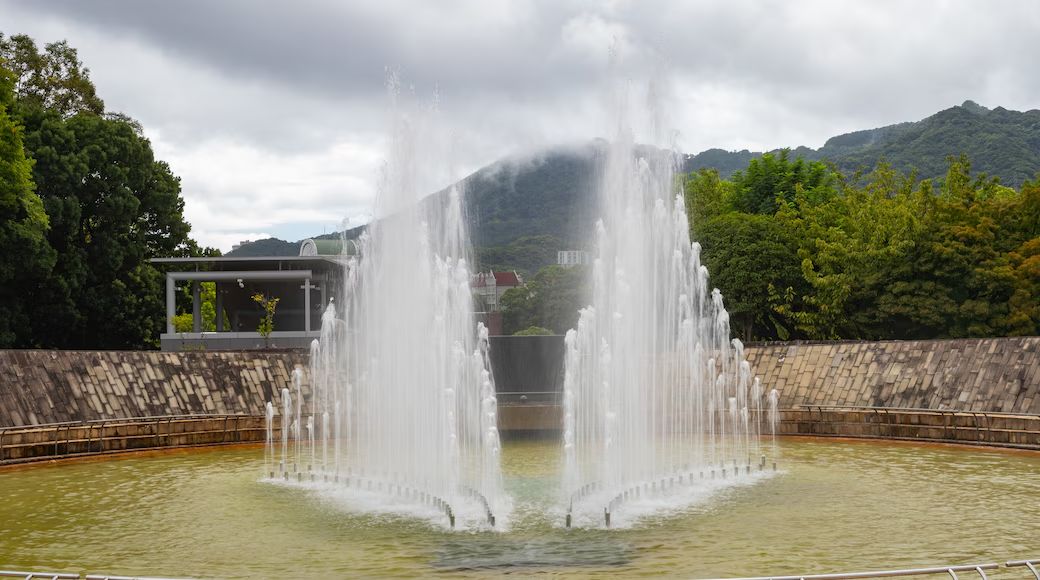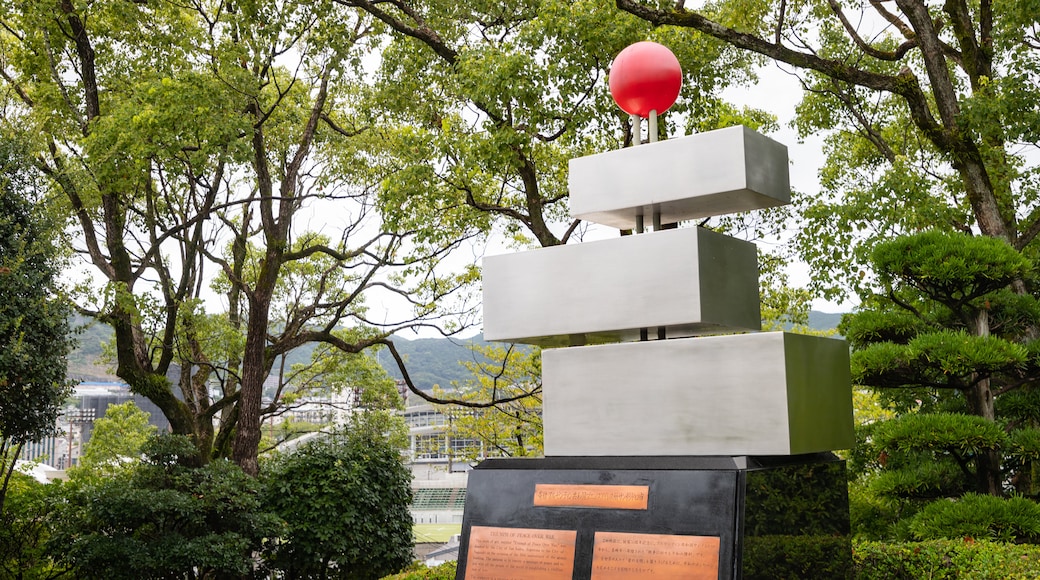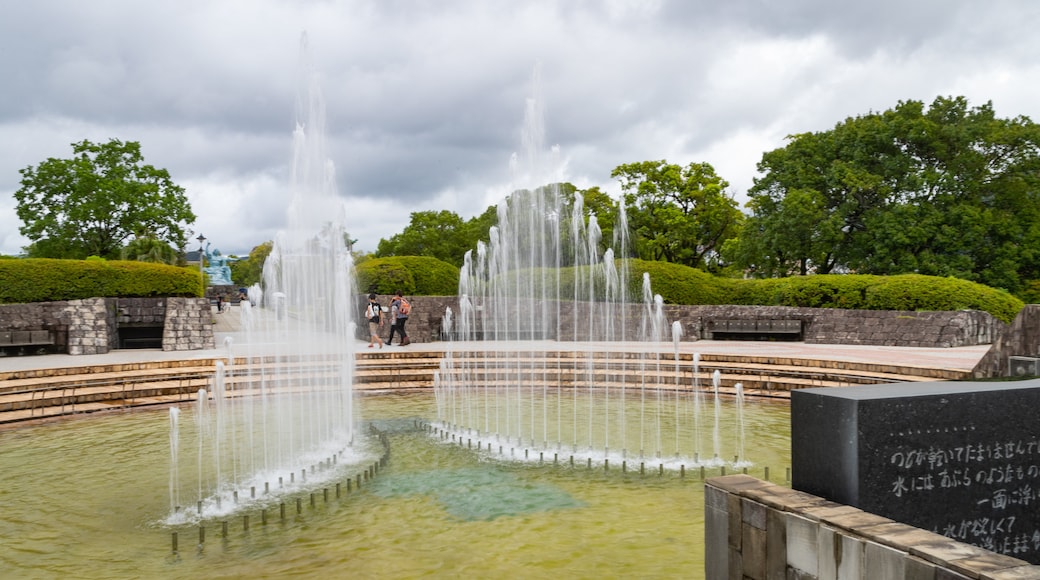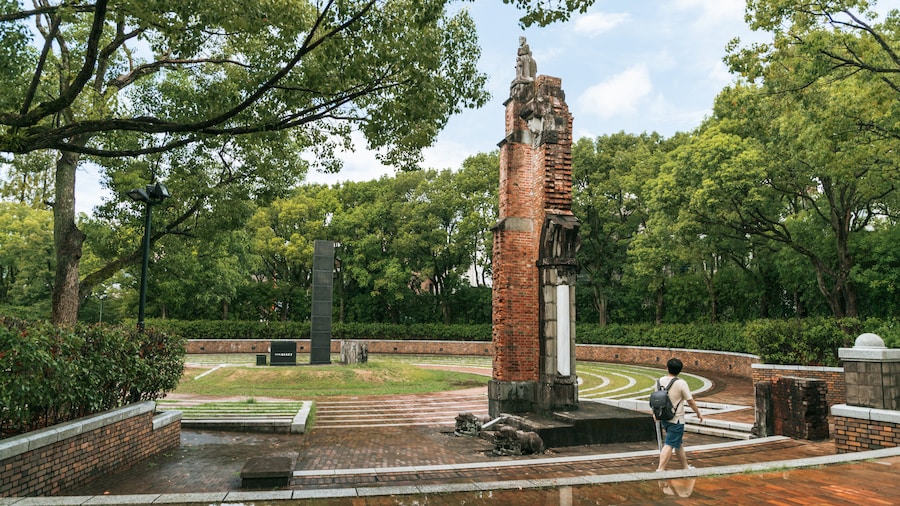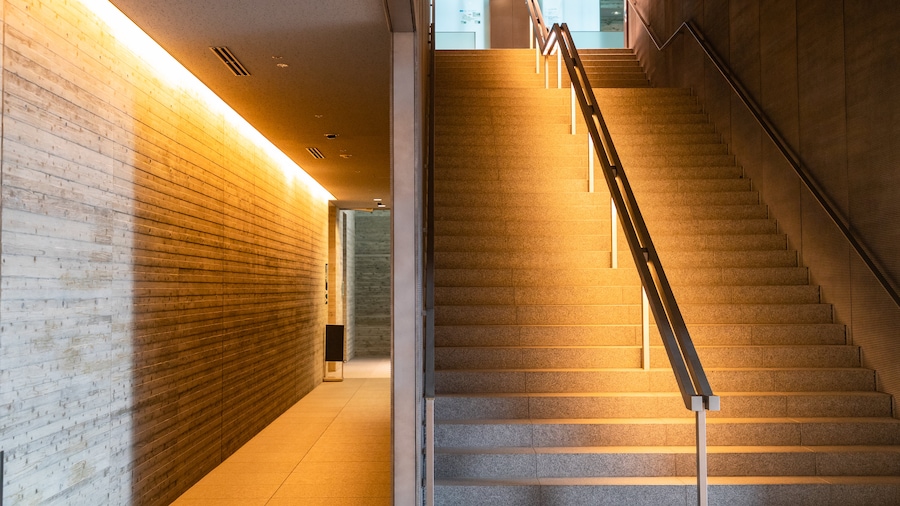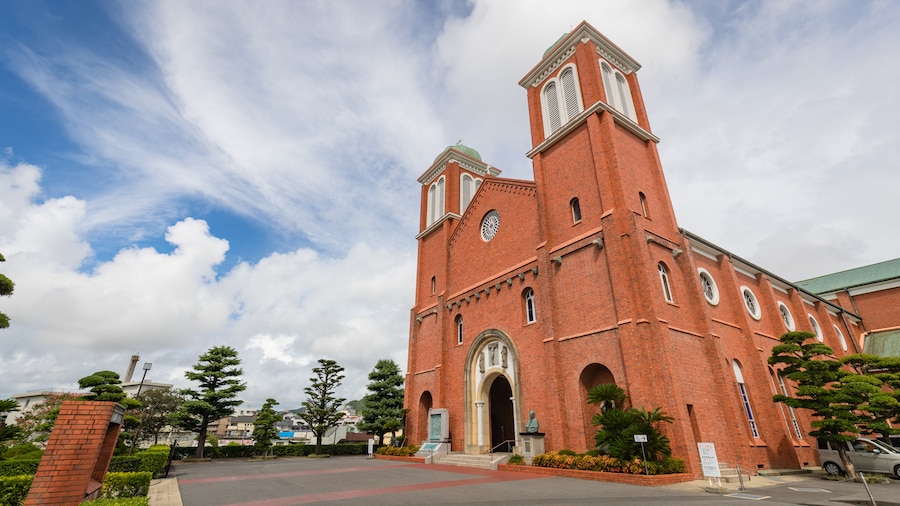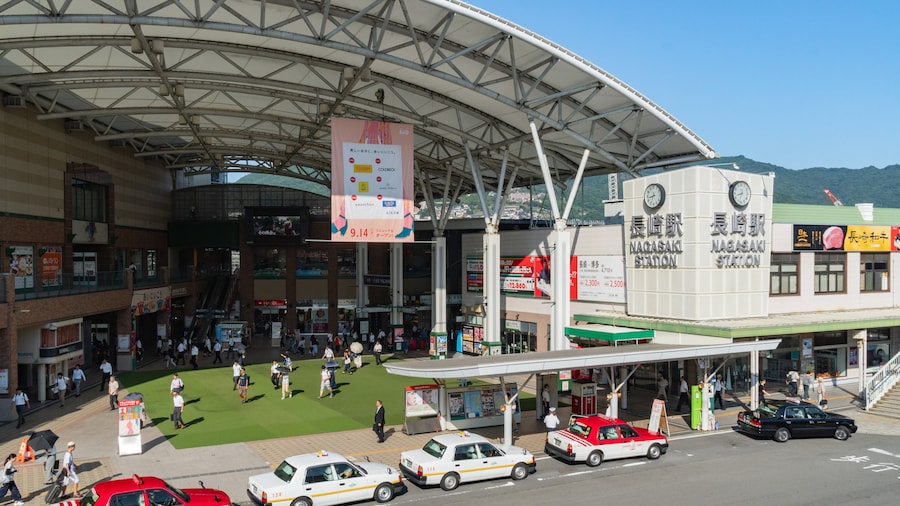At this spot, as reverent a place as you can find anywhere, reflect on one of the worst events to happen to humankind and the dire importance of it never being repeated.
A visit to Nagasaki’s Peace Park is a way to remember the thousands of civilians who perished on that August morning in 1945 when an atomic bomb detonated over the city. Those in the immediate area of the drop, known as the hypocenter, perished instantly while others farther away died slowly, many from radiation sickness. Listen to the somber music that plays every morning at 11:02 over the park’s speakers, marking the time of the explosion.
The Peace Statue that dominates the park is of a muscular figure sitting on its base with one hand pointing up toward the sky signifying where the bomb came from, while the other hand is spread over the land, symbolizing world peace. Nagasaki sculptor Seibou Kitamura created the 31.8-foot-high (9.7-meter) statue with its eyes closed in prayer for the 140,000 people whose lives were ended instantly or gradually by the explosion.
Walk a short distance from the monument to an area that has a single black column marking the exact location where the bomb exploded 1,640 feet (500 meters) above ground level.
Look to one side of the column for a section of a cathedral that was destroyed, as well as a prison’s foundation that was all that remained of the structure following the blast.
Many pieces of art are located throughout the park, donated by cities around the world in an expression of sorrow. The park’s fountain has a plaque in front with a poem written by a child who was thirsty from the lack of potable water, a factor that contributed to the death of many citizens. Nagasaki Atomic Bomb Museum is near the park and provides a detailed account of that fateful day.
Get to Nagasaki Peace Park by taking tram 1 or 3 to the Matsuyama-machi stop, followed by a short walk. Admission is free and an annual memorial ceremony is held on August 9.

